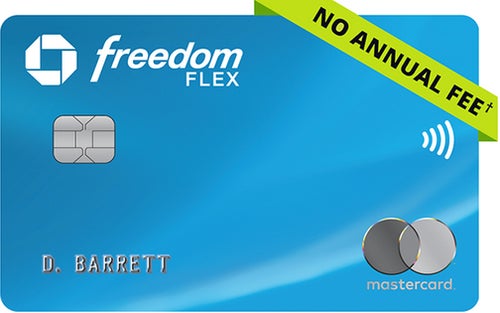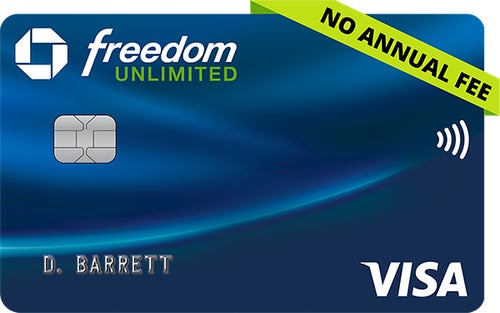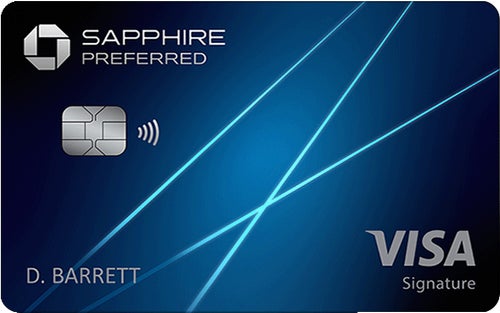Summary
Though Chase has specific requirements you must meet to upgrade or downgrade your rewards card, the process is very straightforward, and you’ll have plenty of great cards to choose from.
The content on this page is accurate as of the posting date; however, some of our partner offers may have expired. Please review our list of best credit cards, or use our CardMatch™ tool to find cards matched to your needs.
Chase is well-known for its extensive portfolio of rewards cards, including co-branded offerings from popular hotel and airline loyalty programs. But what happens if you signed up for one of these cards and it no longer suits your needs?
Whether you are paying too high an annual fee for your budget, not earning enough in rewards for your kind of spending or wishing for a more comprehensive list of benefits, there are plenty of reasons why your Chase card might no longer be working for you.
But before you apply for a new card or cancel your current one – causing a hit to your credit score – consider another option. Instead, you can upgrade or downgrade your Chase card to another product with the bank.
This option, known as a product change, allows cardholders to find another card with the same issuer that better suits their needs and keep the same account information. That means you won’t have to suffer a hard pull to your credit score, and you can swap a card that doesn’t match your spending for one that does.
Considering an upgrade or downgrade with Chase? Here’s how to start the process with the issuer and what eligibility requirements you’ll need to meet.
Top Chase cards for product changes
Everyday cash back | Flat-rate cash back | Travel |
|
|
Upgrade process for Chase cards
To ask for a product change to another Chase card, you’ll need to call the customer service number listed on the back of your current card and inquire about your eligibility for whatever card you are interested in. Then, you’ll be able to complete the entire process over the phone.
The Chase representative will review your account to make sure you qualify, but you won’t have to worry about a hard pull to your credit. If you do make a product change, your account history will simply transfer to the new card – rather than opening a new account.
Eligibility requirements
Before you can switch to a new Chase card, you’ll have to meet a few qualifications. Chase has strict rules in place when it comes to what cards are eligible for an upgrade or downgrade and how long you’ve had your current account. Before calling, keep the following requirements in mind:
The type of card you want
Chase requires that cardholders requesting a product change stay within the same card family. For example, you can upgrade or downgrade an Ultimate Rewards card to another Ultimate Rewards card, but you cannot switch to a card that earns airline or hotel points.
Similarly, you can switch between various Southwest Rapid Rewards credit cards, but not from a Southwest card to a Marriott Bonvoy card. Additionally, you cannot upgrade or downgrade from a personal card to a business card (or vice versa), even if both earn the same kind of rewards.
How long you’ve had your current card
Because of protections in place from the CARD Act, credit cardholders cannot be charged a higher annual fee on the same account in the first year of account opening. Due to this regulation, you won’t be able to upgrade a Chase card to one with a higher fee until your account has been open for at least a year.
While this rule does not affect your ability to switch to a card with a lower annual fee, Chase typically still requires cardholders to have an account open for at least a year before downgrading. You might be able to have success downgrading sooner, but your best shot at a product change happens after the one-year mark.
Account standing
Chase has a positive reputation when it comes to approving product changes, so your likelihood of being allowed to upgrade or downgrade is pretty good. Nevertheless, before you request a product change with any card issuer you should ensure your account is in good standing. If the bank can see a history of on-time payments and responsible card use, you are more likely to be approved for a new card.
5/24 rule
Since upgrading or downgrading a card with Chase is a product change and you’ll keep your original account history, you won’t have to worry about it adding to your 5/24 rule count. Additionally, you don’t have to be within 5/24 to qualify for a product change.
Changes to your credit card
So what changes when you upgrade or downgrade a card instead of applying for a new one? Several things will stay the same, as you have the same account – just with a new card. The following things will not change after your product change:
- Your card number does not change, but you’ll receive a new card with an updated CVV and expiration date – so don’t forget to update any automatic payments.
- Your current rewards balance will transfer over to the new card.
- Your credit limit and APR will be the same on the new card as the old one.
- Since you keep the same card number and account history, managing a new Chase card is simple. Just keep in mind that several features might change:
- Your rewards value might shift, as some Chase cards offer a higher point value than others when you redeem your rewards for travel through the Ultimate Rewards portal.
- You won’t receive a new introductory offer unless you receive a targeted offer directly from Chase. This includes both points-based sign-up bonuses and intro APRs.
- If you downgrade from a card with a higher annual fee to one with a lower fee, you can be refunded the cost as long as you switch within 40 days of the fee posting. If you miss this grace period, you can still receive a prorated refund.
- If you upgrade to a card with a higher annual fee, you’ll be charged your new annual fee immediately.
Benefits of upgrading or downgrading your card with Chase
If your Chase credit card is no longer suited to your spending habits, requesting a product change to another Chase card can help ensure you still earn rewards that make sense for you – all without a ding to your credit score.
For example, the Chase Freedom Flex offers cash back in rotating bonus categories that you must enroll in each quarter, but some cardholders might be able to get more value out of a card with a higher flat rate on non-bonus spending, like the Chase Freedom Unlimited.
You can also ensure that you aren’t spending more than you can afford on an annual fee. If you signed up for the Sapphire Preferred but now can’t swing the $95 annual fee, you could downgrade to a no-annual-fee Ultimate Rewards card – like the Freedom Unlimited.
Alternatively, if you find yourself with more room in your budget to pay a high annual fee, you can upgrade to take advantage of more extensive rewards and benefits. For example, the Sapphire Reserve offers cardholders a $300 travel credit every year and up to $100 in credit for a Global Entry or TSA PreCheck application. These perks have a lot of potential value for frequent travelers if you can handle the card’s $550 price tag.
Tips for making the most of your upgrade or downgrade
- Carefully read your desired card’s terms and conditions before requesting an upgrade or downgrade.
- Regularly reevaluate if your Chase credit card aligns with your needs. You might be able to request a product change to a better fit.
- Request a downgrade within 30 days of your annual fee posting to be eligible for a full refund.
- When you downgrade from the Sapphire Reserve, use as much of the $300 travel credit as possible in the 30-day grace period to have your annual fee refunded.
- If you are downgrading from the Sapphire Reserve or Preferred card, redeem as many points as possible for travel in the Ultimate Rewards portal to take advantage of a higher point value before you switch.
Popular Chase credit cards
| Card | Rewards rate | Annual fee |
| Chase Sapphire Reserve |
| $550 |
| Chase Sapphire Preferred Card |
| $95 |
| Chase Freedom Flex |
| $0 |
| Chase Freedom Unlimited |
| $0 |
| Marriott Bonvoy Boundless Credit Card |
| $95 |
|
|
| $0 |
| Southwest Rapid Rewards Plus Credit Card |
| $69 |
| Southwest Rapid Rewards Premier Credit Card |
| $99 |
| Southwest Rapid Rewards Priority Credit Card |
| $149 |
Bottom line
Chase has a wide variety of great cards for all kinds of spenders. If you find that your card no longer suits your needs, you can likely switch to a different Chase product. That way, you’ll earn rewards matched to your lifestyle without suffering a hit to your credit score.
Just keep in mind that Chase has some eligibility requirements before you can take advantage of this option, such as how long you’ve had your account open and which products you can switch between. You also won’t be able to snag an introductory offer.
Nevertheless, choosing to upgrade or downgrade your Chase card is a great option for many types of cardholders, and the process is very straightforward.
Editorial Disclaimer
The editorial content on this page is based solely on the objective assessment of our writers and is not driven by advertising dollars. It has not been provided or commissioned by the credit card issuers. However, we may receive compensation when you click on links to products from our partners.






